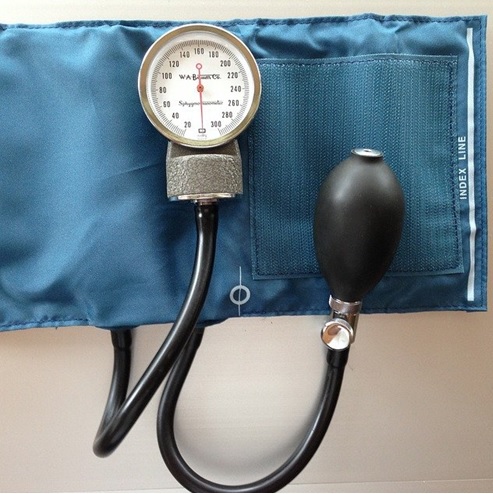Innovative technologies continue in the medical community in the blood pressure monitoring realm giving patients options outside the standard sphygmomanometer and allowing more frequent testing for greater preventative measures. Open for details on the future of monitoring pressures.
Statistics indicate out of four men and five women, at least one will develop hypertension or high blood pressure putting them at significant risk for heart disease, including myocardial infarction (heart attack) or stroke.
In a lot of cases, people experience virtually no symptoms with elevations in blood pressure creating challenges for doctors to diagnose and provide treatment timely. That’s why consistent measurements, particularly for those of higher risk, are crucial.
Employing the use of a wearable blood pressure monitor watch gives the patient greater access and more convenience to do so. Some of these are still following through FDA approval processes, but those that met the guidelines show clinical accuracy comparable to that of a standard cuff.
Traditional Cuff Blood Pressure Monitoring
Generally, a blood pressure monitor cuff or a sphygmomanometer detects hypertension in an official capacity. The cuff wraps around your upper arm and connects to a unit with a monitor.
The objective is for the band to tighten and restrict your blood flow. That allows sensors on the interior of the cuff to test your blood’s power as it pumps throughout your system (or, to put it simply – it measures your blood pressure). It’s a relatively straightforward, accurate solution making some ponder the need for other options.
Proactive Measures For Hypertension Detection
When it comes to symptoms, there are often no visual signs of elevations in blood pressure. Relying on an overt indication to go to the doctor for testing and treatment might not happen, putting you at great risk for a cardiac event or stroke.
Experts in the medical community recommend patients measuring for hypertension regularly instead of once a year with a doctor’s physical, more like twice every day.
Statistics done from a wearable device company in 2020 showed that only a third of the population checks their pressure and only does so one time in a month, with another third following through with the annual doctor’s visit. In some cases, it’s due to not having adequate equipment or a lack of necessary resources.
Multiple scenarios speak for the need to test your pressure more than once with a doctor. You need to acclimate to a new medication with readings several times the day you start and for a few days after to see how it reacts. In many patient’s situations, that’s virtually impossible.
For some people, conventional testing is a challenge to develop an accurate baseline, with some suffering what doctors refer to as “white coat” hypertension. In this symptom, elevations only occur when they visit the physician. There’s also “masked” where the level shows fine in the clinic but raises in the home. Still, others experience exceptionally high pressures at night known as “nocturnal.”
Is The Cuff Practical For Frequent Use?
A sphygmomanometer is available for anyone to buy to monitor pressure levels in the home with a range of options. Some doctors will recommend an ABPM or “ambulatory blood pressure monitoring” that comes with a monitor to attach the cuff for a reading every 30 minutes that it stores for viewing.
The cuff method often deems an inconvenience since there are several instances where it isn’t practical. You can’t use this technique at night because levels could increase when the cuff inflates. It could also prove challenging to wear in the daytime, particularly if you work outside the home or for those with disabilities or the senior population. That’s where wearable innovations are beginning to come onto the scene.
Are Wearables A Better Option?
Technology companies are developing wearable methods for measuring pressures that are not only simple for everyone but unobtrusive. The devices mimic fitness tracking units people put on their wrists and can test at any time of the day without frustration or stress. Check out the innovations at https://science.howstuffworks.com/innovation/everyday-innovations/question146.htm.
There is a broad range currently in the development phase undergoing extensive research with varied metrics like the “pulse arrival and transit times” and “pulse wave analysis and velocity.” These need compared to a cuff reading for accuracy purposes due to a few challenges still left to work through.
The AMA or “American Heart Association’s” recommendation is that testing comes from the upper arm feeling that areas like the finger or wrist might not provide the same accuracy. The patients are sitting, allowing constant pressures in the brachial artery.
With wearable devices, the radial artery produces the signal at a level lower than the heart, giving a “hydrostatic variance” touting a poor estimation at best. While these are convenient, portable, and allow the necessary frequency, the accuracy needs fine-tuning, which developers hope is coming through stringent validation and collection of data. Doctors need the readings to be 100% for proper care and treatment. False measures can lead to severe consequences for the patient.
Final Thought
Hypertension is a silent disease that threatens a significant portion of the population, increasing heart attack and stroke risks. Sadly, there are few if any symptoms associated to let you know you’re experiencing heightened levels until you have a cardiac event. You need to learn the risks and where you fall in those categories, plus see your physician for regular checkups and physicals.
The suggestion is to check your blood pressure as regularly as two times every day as a preventative measure. Technology is currently attempting to make the process easy and convenient. Manufacturers are developing devices like wristwatches and other units you can merely wear without having to give much thought that you’re proactively taking measures for the greater good of your health.
That doesn’t mean you should throw away your cuffs just yet. It’s wise to compare your cuffless with the traditional sphygmomanometer until the FDA gives the medical devices its full approval to avoid your doctor receiving inaccurate information and risking potential harm. Claims suggest, though, that the future for wearables looks promising, so hold tight.









